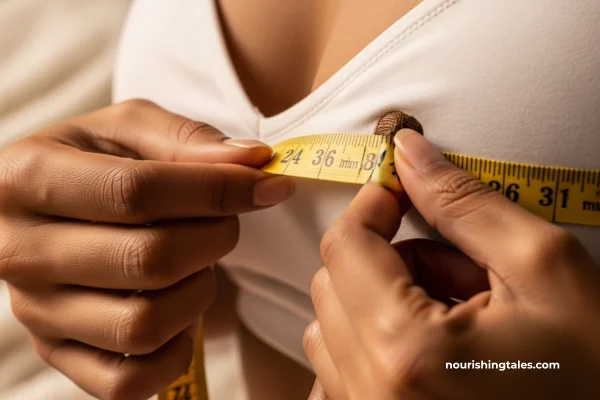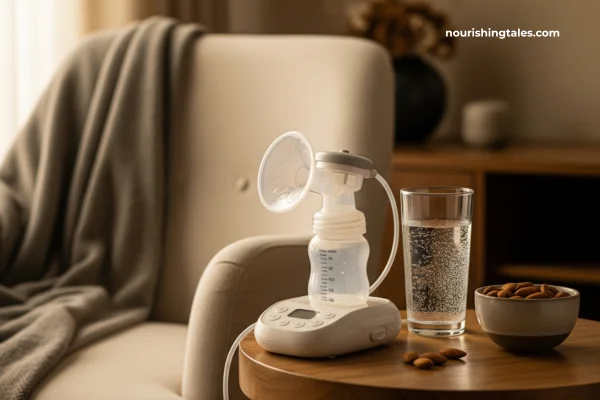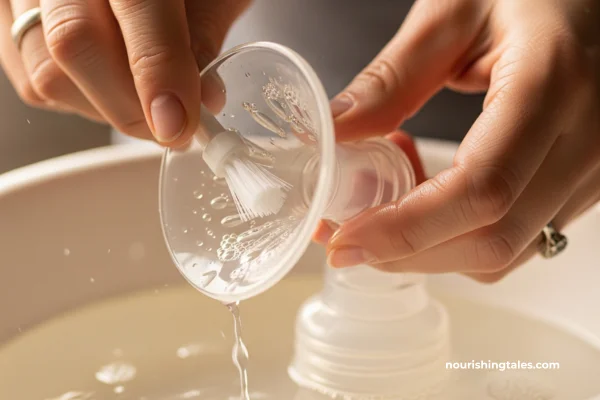Wearable pumps vs. traditional electric pumps present a choice that can feel overwhelming when you’re staring at a sea of breast pumps online. You are not alone if you’re feeling completely lost. Choosing a pump can feel like one more giant decision on your already-full plate, especially when everyone seems to have a different opinion.
Think of us as your knowledgeable friend, here to cut through the noise. In the world of electric pumps, there are two main contenders: the classic, powerful traditional pump and the sleek, modern wearable pump.
So, which one is right for you? There’s no single “best” answer, but there is a best answer for you. Let’s break it down, step-by-step, so you can feel confident in your choice.
The Classic Workhorse: The Traditional Double Electric Pump
This is the pump you’ve probably seen most often. It has a separate, small motor that sits on a table next to you. This motor connects via clear plastic tubes to the two collection kits (flanges and bottles) that you hold against your breasts. You’re usually sitting down and plugged into a wall, though many models now have battery packs for a bit more freedom.
Brands like Medela and Philips Avent are household names in India for a reason—this design is tried, tested, and trusted by hospitals and parents alike.
Why you might love a traditional pump:
- Unmatched Power to Build Your Supply: This is their superpower. Traditional pumps, especially hospital-grade models, are designed with robust motors that are brilliant at mimicking a baby’s sucking pattern. This power is incredibly helpful for establishing your milk supply in the early days or if you have any concerns about producing enough milk.
- You Can See Everything: With clear flanges and bottles, there’s no guesswork. You can see your nipple is centred correctly, watch your milk let down, and know exactly how much you’re pumping in real-time. This visual feedback is incredibly reassuring.
- Built Like a Tank: These pumps are made to be durable. The motors are strong, and the parts can handle daily (or multiple-times-daily!) washing and sterilising. A good one can easily last through your entire pumping journey.
- Friendlier on the Wallet: Generally speaking, traditional pumps are less expensive than their wearable counterparts, making them a more accessible option for many families.
What to keep in mind:
- You’re Tethered: Because you’re connected by tubes to a motor, your movement is limited. You can’t easily get up to grab a glass of water or comfort your baby without pausing your session.
- They’re Not Exactly Subtle: The rhythmic whirring of the motor is pretty distinct. Pumping discreetly during a work call or in a quiet, shared space can be a challenge.
- Lots of Little Pieces: The setup involves a motor, tubes, flanges, connectors, valves, and bottles. That’s a lot of parts to manage, and misplacing even one tiny piece can derail a session. Making sure every part is spotless is key for your baby’s health, and we have a complete guide on how to clean your pump parts to make it less daunting.
The Modern Multitasker: The Wearable Breast Pump
A wearable pump is a small, self-contained pod that you slip right into your nursing bra. The motor, flange, and milk collector are all built into one compact unit. There are no tubes, no wires, and no bottles hanging off your chest. You just pop them in, turn them on (usually with your phone), and carry on with your day.
Why you might love a wearable pump:
- Complete Freedom and Mobility: This is the game-changer. You can cook, fold laundry, play with an older child, or work at your desk—all while pumping. For a busy parent, turning pumping into a background task instead of a stationary chore can feel life-altering.
- Incredibly Discreet: Because the pumps are hidden in your bra and the motors are much quieter, you can pump almost anywhere without anyone knowing. This can be a huge relief if you’re feeling anxious about pumping at work or when you’re out and about.
- Simpler by Design: With an all-in-one design, there are fewer separate pieces to juggle. Assembly and disassembly are often faster and more straightforward.
What to keep in mind:
- The Price Tag: This cutting-edge convenience comes at a premium. Wearable pumps are a significant investment compared to traditional models.
- There’s a Learning Curve: Getting the pump positioned perfectly inside your bra can be tricky at first since you can’t see your nipple lining up with the flange tunnel. Poor alignment can lead to discomfort and less milk. Remember, a key to comfortable and effective pumping is always ensuring a perfect fit.
- May Be Less Powerful for Some: While many parents use wearables successfully, the suction is generally gentler than a traditional pump. For some, especially those trying to boost their output, it may not be effective enough to fully empty the breast. If you ever have concerns about your output, know there are many ways to support your body’s production.
- No Real-Time Feedback: You can’t easily see your milk flowing or how much you’ve collected until you take the pumps off. This can be unsettling if you’re used to watching the bottles fill up.
Here’s The Final Verdict
Let go of the idea of “better” or “worse.” Instead, think about your life, your goals, and your priorities.
A traditional pump might be your best friend if…
- You’re exclusively pumping and need to build and maintain a full supply.
- Maximising your milk output is your number one priority.
- You’ll mostly be pumping at home in a comfortable spot.
- You’re working with a tighter budget.
You’ll likely fall in love with a wearable pump if…
- You’re a working parent who needs to pump discreetly at the office or on the go.
- You have other little ones to chase after and can’t be tied to a chair.
- Privacy and discretion are your top concerns for your mental well-being.
- You value convenience and freedom and have the budget to invest in it.
You Don’t Have to Choose Just One
Many parents today are taking a hybrid approach, and it’s a fantastic solution. They use a powerful, reliable traditional pump as their primary workhorse at home to protect their milk supply. Then, they use a wearable pump for work, running errands, or those days when they just need to be hands-free.
Ultimately, the best breast pump is the one that fits into your life and helps you reach your personal feeding goals with the least amount of stress. You’ve got this.
Disclaimer: This article is for informational purposes only and is not a substitute for professional medical advice. Please consult with an International Board Certified Lactation Consultant (IBCLC) or your healthcare provider to create a feeding and pumping plan that is right for you and your baby.




